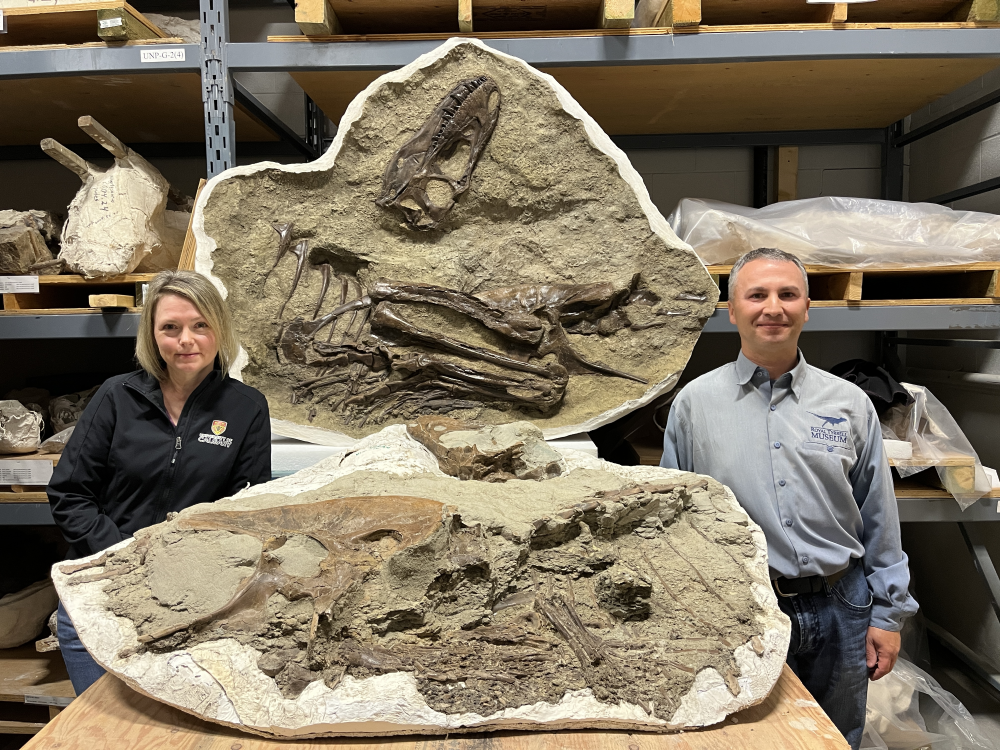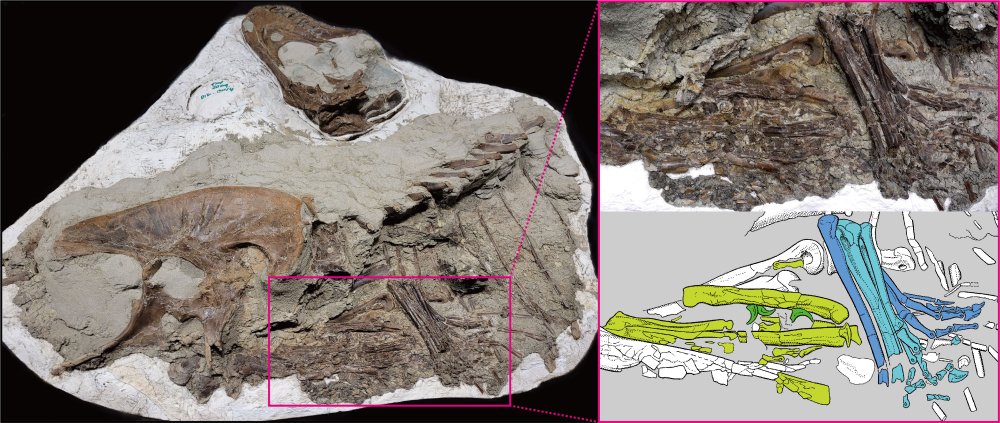The last meal of a Tyrannosaur has been discovered for the first time in a fossil that shows a juvenile Gorgosaurus with its stomach contents in situ. The picky eater only ate the legs of two small feathered dinosaurs that were likely a popular and abundant menu item around 75 million years ago, and the species Citipes elegans is now best known from the fossilized stomach contents.
“It feels rather unfortunate for the Citipes, but lucky for us,” study co-author Dr Darla Zelenitsky of the University of Calgary told IFLScience. Zelenitsky describes the Gorgosaurus specimen as a “once in a career fossil” – though, it’s worth noting that her career has involved a few of these by now – because of its uniqueness as the first Tyrannosaur ever found with preserved stomach contents.
The degradation of the bones tells us that the Gorgosaurus must have died within a week of eating the Citipes legs, but as for what killed it? “It’s pretty clear what the cause of death of the small Citipes is,” joked co-author Dr François Therrien of the Royal Tyrrell Museum. “But as for the cause of death of the Gorgosaurus? We have no idea, but [it] probably did not die of indigestion.”
“The carcass of the dinosaur was found at the bottom of a river channel deposit, but that doesn’t necessarily mean that it drowned in the river. It’s just that this is an ideal environment to be buried because rivers transport a lot of sediments.”

Francois Therrien (right) and Darla Zelenitsky (left) with the Gorgosaurus fossil with preserved stomach contents.
Image credit: Royal Tyrrell Museum of Palaeontology
The moment of death can have a big impact on our capacity to learn about extinct animals, particularly when it comes to their behavior which is rarely captured in fossils. Exceptions to this have been found in Mongolia’s Gobi Desert where ancient animals sometimes died from sudden dune collapse.
“Say there was a rainstorm, and the dunes collapsed on top of dinosaurs, you often get them [preserved] in these life positions, which is really neat,” Continued Zelenitsky. “So you’ll Oviraptors sitting on a clutch of their eggs actually brooding them. The famous specimen that’s known from Mongolia was a dune collapse, and it’s the Velociraptor and Protoceratops that are actually physically interlocked and fighting one another.”
“That said, this specimen from Alberta, which is preserved in the river environment, does give us a good snapshot of behavior in a Tyrannosaur dinosaur, and that’s its feeding behavior. That it was this precision eater, a picky eater, and it was off chasing after small and swift prey like Citipes.”
Discovering the dietary habits of juvenile Tyrannosaurs delves into an idea Therrien and Zelentisky have been investigating about how these animals were able to dominate certain ecosystems. They argue that rather than following one dietary behavior throughout their life, these animals’ diets changed as they got older – meaning that though they represented just one group of animals, they were taking up multiple positions within the food chain.

Analysis of the bones in the Gorgosaurus stomach contents indicates it ate two Citipes a couple of days apart before dying.
Image credit: Kohei Tanaka (University of Tsukuba) and Francois Therrien (RTMP)
We know from bite marks found on fossil bones that the adults were partial to taking down big herbivores like ceratopsians (horned dinosaurs) and hadrosaurs (duck-billed dinosaurs). Adult Gorgosaurus weighed around 1,000 kilograms (2,200 pounds) and used their massive skulls and “killer banana” teeth to catch large prey and bite through bone – but for a long time, we didn’t know if the juveniles (that are about a third of that weight) did the same.
“Now we have evidence that the young Tyrannosaurs had a different diet from adults, we want to try to pinpoint if there are any other things we can say about it, like what type of prey did they feed upon, or at what exact timing did the diet change, and how,” said Therrien.
“The fact that Tyrannosaurs were capable of occupying different ecological niches throughout their lives was probably one of the factors that made them such successful animals that they could control their ecosystems without leaving room for other species of theropods to come in and try to carve a niche.”
Occupying different ecological niches would’ve given Gorgosaurus the benefit of not competing for resources with its older and younger counterparts, and may have contributed to Tyrannosaurs eventually becoming some of the largest predatory dinosaurs in Earth’s history.
The study is published in the journal Science Advances.
Source Link: 75-Million-Year-Old Fossil Is First-Ever Tyrannosaur Found With Stomach Contents